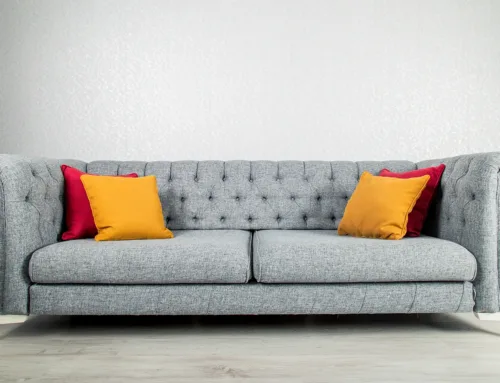The Ultimate Guide to Furniture Cleaning Codes
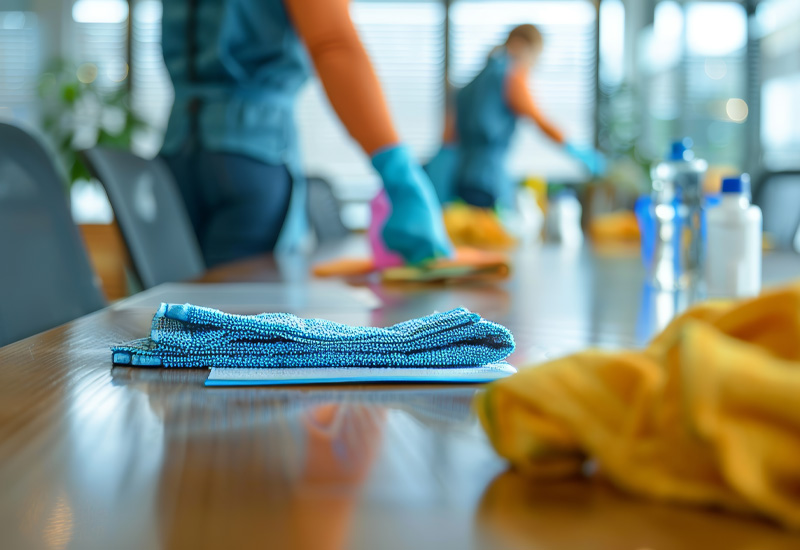
Ever spilled coffee on a couch and felt a flash of panic? You may automatically run to your cupboard to grab some cleaning supplies but are you sure what you should be using. Should you grab a dry cleaning solvent for upholstery? Did you know that your furniture has a very handy cleaning code associated with it.These codes are the secret language of furniture care, guarding the longevity of your favorite armchair. From W to X, each letter holds the key to a stain-free existence. Get ready to become fluent in the alphabet soup that is furniture upkeep as this guide unfolds the mystery behind those cryptic cleaning codes.
Upholstery Cleaning Codes at a Glance:
- W: Water-based cleaner friendly
- S: Solvent-based cleaners only (Professional Cleaning Recommended)
- F: Foam cleaning only
- X: Vacuum or brush only (No water, no solvents!)
So, let’s keep our cozy spots looking and feeling fabulous without the guesswork. Stick to those cleaning codes – they’re a lifesaver (or should we say, a sofa-saver)
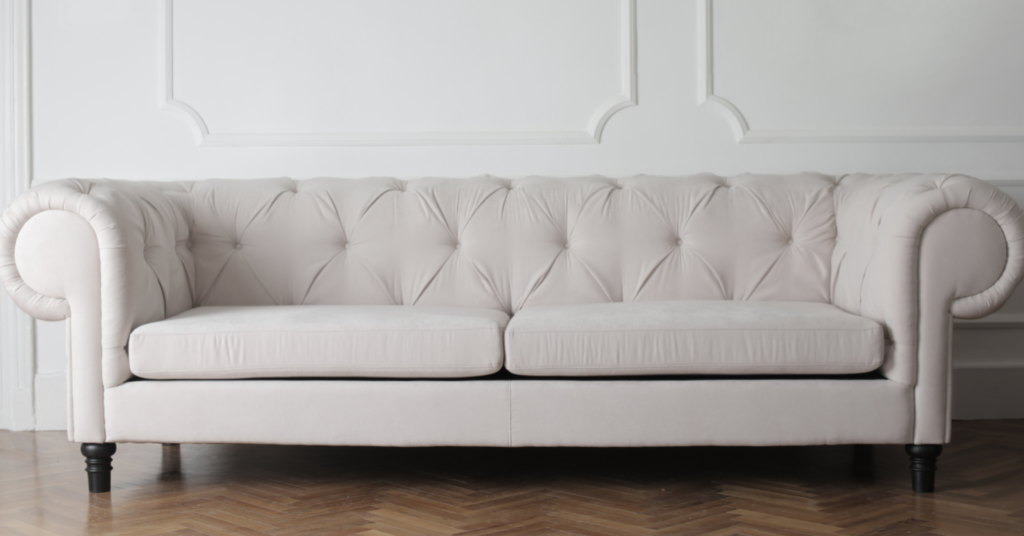
Why are Upholstery Cleaning Codes Important?
Ever cozied up on your couch and wondered how to keep it fresh without ruining the fabric? That’s where upholstery cleaning codes come in. Picture this: each piece of furniture comes with guide that tells you exactly how to give it some TLC without causing a disaster.
Imagine spilling your morning coffee on your favorite armchair. Panic mode? Not anymore! Just check the cleaning code, and you’ll know whether to dab it with water (Code W) or call in the pros for a deep clean with their magic upholstery cleaning machines (Code S). And if you’re dealing with something super delicate like silk or rayon, a professional upholstery cleaning service has got your back, ensuring your plush throne doesn’t turn into a shrinky mess.
Regular vacuuming is fab for dust mites and keeping the air quality top-notch, but some spills need a bit more – like a spot treatment or even a carbonated cleaning solution. Just peek at the care tag, and you’ll know whether to go DIY or dial-up Valley Fresh for help. These tiny tags are your secret weapon to keeping your dining room chairs and all your upholstered buddies looking spick and span.
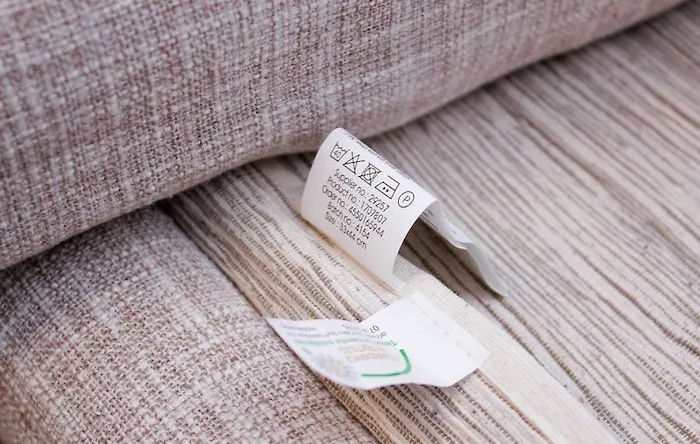
The Different Upholstery Cleaning Codes
Now that you understand the basics behind these important cleaning codes, lets review in a little more detail. Now, it might seem like alphabet soup at first, but once you get the hang of it, it’s pretty straightforward. You’ve got your W’s and S’s, plus a few others that tell you the dos and don’ts of cleaning your beloved sofas and chairs. By sticking to these guidelines, you’ll be taking fab care of your furniture, and trust me, it’ll thank you by looking great for years to come!
W – Water-based cleaners
Ever spot the ‘W’ on your furniture label and wonder what it’s all about? Well, it’s all about the water! When you’ve got a ‘W’, it means your furniture can be buddies with water-based shampoo or foam upholstery cleaners. Thinking about a spot clean? Just reach for a water-based detergent, and you’re good to go. And if you’re mulling over steam cleaning, take a pause and check in with a professional cleaner. They know just how to treat your W coded fabrics with the gentle care they deserve.
S – Solvent-based cleaners
Now, if your furniture is sporting an ‘S’, it’s telling you to steer clear of water and stick with a dry solvent cleaner. Why, you ask? Well, these special solvents whisk away oily soils and saving the day by averting any potential color bleeding or shrinking drama. Just a heads-up though, you’ll want to treat these solvents with respect since they’re not good with adhesives or latex back coatings that might be lurking in your fabric.
S – Solvent-based cleaners
The SW code is like having a flex option—it’s saying, “Hey, I’m game for both water and dry cleaning solutions, but let’s play it safe.” Now, this code is not your everyday find and can be a tad trickier to handle. If you’re tackling a stain on an SW piece, acting fast is key, and when in doubt, leaning towards a solvent cleaner can be your best bet. But honestly, these types of upholstery often benefit from a professional‘s touch to ensure they keep looking their Sunday best.
X – Vacuum only
Got an ‘X’? It’s time to get friendly with your vacuum. X marks the spot where no water or solvent dares to go. This is super important for those snuggly velvet fabrics that just need a good vacuuming or a gentle, dry brushing to stay in tip-top shape. Remember, ‘X’ means hands-off when it comes to liquids of any kind – this fabric’s no-mess zone is real!
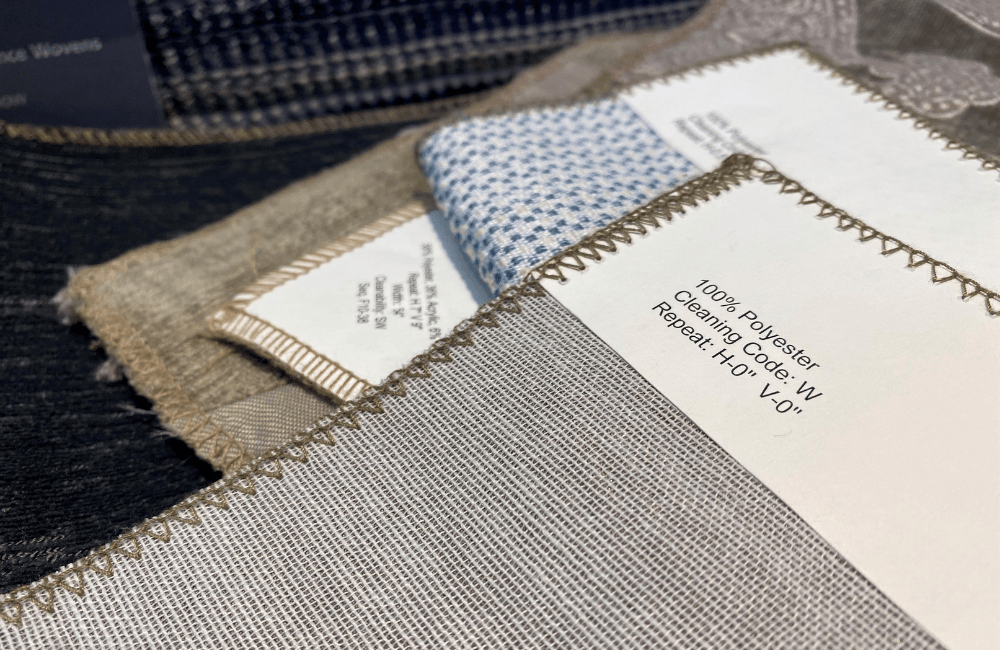
Where to Find Upholstery Cleaning Codes
Tidying up your cozy pieces of furniture and ensuring they look their best starts with knowing the right way to care for them. Ever noticed those mysterious letters on the tags of your sofa or dining room chairs? Those are upholstery cleaning codes, and they’re your best buds when it comes to keeping your furnishings looking fabulous.
Here’s a little scoop: flip over those seat cushions or peek under the unit, that’s where the secret’s at. You’ll find a tag that’s sort of like a cheat sheet for treating your upholstery right. This cleaning code is like a love language between you and your furniture, telling you exactly what it needs to stay clean and lovely.
What To Do If Upholstery Cleaning Codes Are Not Present
Have you ever peeked under your comfy sofa cushions or beneath your favorite armchair and wondered about those mysterious upholstery cleaning codes? They’re your secret guide to keeping your pieces of furniture fresh and fabulous. But what if those codes are playing hide-and-seek with you?
If you’re facing this little hiccup, take a deep breath and relax. You can still keep your treasures looking top-notch. Begin by performing a discreet trial run with any care products you plan to use on a hidden patch of the fabric. This undercover mission helps you to avoid any unwelcome surprises.
When an uninvited spot decides to make an appearance on your upholstery, gently clean from the edges toward the heart of the area. This technique helps you wave goodbye to those pesky rings that spots can leave behind. Remember, though, this isn’t the time for a detergent duel—strong cleaners and harsh chemicals aren’t upholstery’s best friends.
General Advice On Cleaning And Caring For Upholstery
First off, let’s talk about those pesky stains. Should one appear, grab a clean, white cloth, and just gently blot. Rubbing? That’s a big no-no – it could make things worse. And if you’re dabbling in a new cleaner, always do a little undercover testing – spot test in a hidden area first to ensure the fabric agrees with your choice.
Now, if you’re facing a spill, remember – work your way from the outside in. This helps stop the dreaded rings and spreading. As for the harsh chemicals and strong detergents, they could be harsh on your upholsteries’ skin, so let’s skip them and keep your fabrics happy.
To cap it off, your upholstery comes with a secret code – like a cheat sheet. Find that tag and follow the recommended cleaning code. It’s the golden rule for ensuring your cozy nook stays as good as new.
General Advice on Cleaning and Caring for Upholstery:
- Pre-test care products in an inconspicuous area.
- Avoid using detergents or strong chemicals – they’re not friends with fabrics.
- Clean spots from the outside in to prevent unsightly rings.
- Blot stains with a clean, white cloth – don’t rub!
- Adhere to the cleaning code on the fabric tag for the best results.
Your furniture is kind of a big deal. Treat it with care, and it will continue to be the star of your living space!
Wrapping Up
Understanding furniture cleaning codes is essential for maintaining the longevity and appearance of your upholstery. By familiarizing yourself with these codes and following the recommended cleaning methods, you can ensure your furniture remains in top condition. Whether dealing with a minor spill or a thorough cleaning, knowing the correct approach helps avoid damage and extends the life of your pieces. With this knowledge, you can confidently address any cleaning challenge, keeping your home fresh and inviting. For any tough stains or professional advice, don’t hesitate to reach out to Valley Fresh Carpets for expert assistanc



